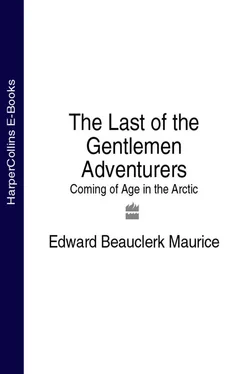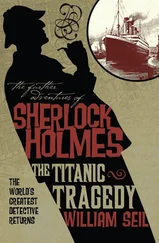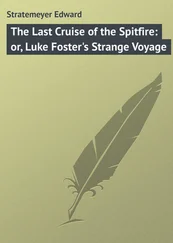My upbringing, both at home and at school, had run along very strict lines of morality, so that anything that deviated from the straight and narrow was not to be contemplated and certainly not to be mentioned. In my grandmother’s house the assumption was that only the lower orders indulged in the sins of drunkenness and immorality, no matter what evidence there was to the contrary. Obviously I now had to emerge rapidly from the Victorian world which had hitherto enclosed me.
In time I was to realize that in fact Geordie and Ooloo’s relationship was quite proper among the Innuit, the only anomaly being that he was a foreigner. Marriages were not arranged between families, the young being free to choose as they wished. A girl might pair with several men before marriage, without any obligation on either side; indeed, she might cohabit with several young men at the same time. If the girl had a child, it was likely, but by no means certain, that the association would become permanent.
Hunters might have two wives, and it was quite common for a man to permit unrelated persons to have relations with his wife, usually, but not invariably, on a reciprocal basis. This was partly a practical arrangement, as the hunters frequently passed through different camps on their hunting expeditions, but it might also be the basis of a very useful friendship.
The Eskimos tended to become interdependent by utilizing each other’s skills. If a man was a good carver, he carved; others might have good organizing ability and be called upon to organize expeditions; some would be especially able at making hunting weapons or kayaks, while all who had any flair for hunting went after seals or deer. Each man had to be able in some direction and when there was overduplication it would be normal for a man to leave his group, deserting his wife and children to find another home where he would be more useful.
The effects of this attitude to coupling and marriage were that relationship could be claimed on a fairly wide basis. Apart from the immediate family, if a husband or wife had children not belonging to their present partner, such children would form a link between all the people on both sides of the family. This meant a greatly increased number of potential friends and of camps at which a hunter would have what might be termed residential qualifications, since the camps were organized on a strictly family basis. Family ties were flexible so that a hunter could move from one group to another. Provided that the new group was within the wide family circle, he would at once be accepted as a proper member of the community.
It was sometimes thought that the Eskimos practised some sort of communism, but this was not so, for the foundation of their society was the family grouping in the broadest sense, which resulted in collective responsibility and cooperation with the relatives with whom one was resident at the moment. Thus the whole camp shared the successes and failures, the good times and the bad.
There was a clear division of labour within each home. The men were the hunters and it was they who made the tools and the household goods and built the homes. The women cooked, dressed the skins, tended the oil lamps used for heating and cooking and made all the clothes, using their own tools. Sometimes exceptional women would stray into the men’s world, but the men, even though they might be totally incompetent as hunters, did not take on the women’s tasks.
The bleakness of my room, as well as the very changed conditions to which I had to adjust myself, had depressed me considerably, but my spirits started to revive as soon as I stepped outside. The house door faced up to the fiord, where the high black cliffs swept round in an arc, rising steadily to a point at which the inlet turned sharply northward. On the far shore, the hills fell slowly away again to a pleasant green valley, just opposite the house. From above this eastern valley, the sunshine spread across the water, picking out the kyaks and boats of the few Inuit who were taking advantage of the calm morning to go seal hunting. The panorama of the high and moody hills, the green valley, the sunshine sparkling on the sea and the kyaks flashing to and fro across the water, lifted my depression completely. Here was a timeless scene from long ago which had somehow managed to remain unchanged in a changing world.
The Pangnirtung fiord settlement of 1930 was one of the largest on Baffin Island. The Hudson’s Bay Company post, centrally situated among the buildings, consisted of a line of four houses spaced along the coastal flat just before the land dropped about thirty feet or so to the edge of the reef. There were two storehouses, a main dwelling and a secondary dwelling which had been used as an interpreter’s home. The woodwork was, as was usual for the Hudson’s Bay Company, painted white with green facings and a red roof. The buildings stood about ten yards apart but were linked together by two straight lines of whitewashed rocks that created the illusion of a purpose-made path. The inevitable flagpole was situated in a neat little square in front of our home and the Hudson’s Bay Company flag was flown on any suitable occasion.
About fifty yards beyond us, towards the mouth of the fiord, the Royal Canadian Mounted Police had established their post of two buildings, a dwelling and a kind of storehouse. In front of their house was a little weather station, from the middle of which rose their flagpole, a much more impressive affair than ours, fittingly perhaps, because from it flew the Canadian flag, proclaiming ownership of this large arctic island.
Behind the Hudson’s Bay Company post, at the back of the flat, was the archdeacon’s mission house, which served both as a home and a church, and the sealskin tents of the Eskimos were spread over the intervening space. Some distance away, we had our ‘blubber’ sheds which housed the equipment for rendering oil and curing hides. In that year there were three Hudson’s Bay Company people, three R.C.M.P.s and one missionary, which represented one of the main concentrations of Baffin Island population.
Ooloo had been busy dishing out tea to the men and women gathered in front of the store waiting to start the morning’s work of organizing the year’s supplies. The people were dressed in a variety of garbs. Some wore sealskin anoraks, some woollen ones and others ordinary bush shirts. The women, who did not wish to miss the chance of earning a dollar or two, were there, carrying their babies on their backs.
Gradually we sorted the large pile of boxes into the proper places in the store. It was general practice at that time to keep two years’ supply of all the more vital commodities on hand, to allow for the possibility of the Nascopie not being able to get through the ice. There were large quantities of tea, flour and similar items, each package being marked with the year of delivery indicated by an outfit number.
The first northern trading voyage undertaken by the ‘Gentlemen Venturers trading into Hudson’s Bay’ was in 1668 and the original instructions to one Zachariah Gillam, master of the ketch Nonsuch which had been selected for the voyage, are still preserved. The orders were that the master should sail his vessel to such places as were chosen by the traders who had come with him. He was to find safe anchorage and wait there while the trading took place. As soon as a good quantity of furs, skins and the like had been gathered together, the Nonsuch was to return home. Two years later, when the first trading post was established, outfit number one was sent north to be put ashore in the bay and the annual voyages had been numbered from that year onwards (1670), so that every item arriving in my first year had the number 260 painted or stencilled on it.
Читать дальше












